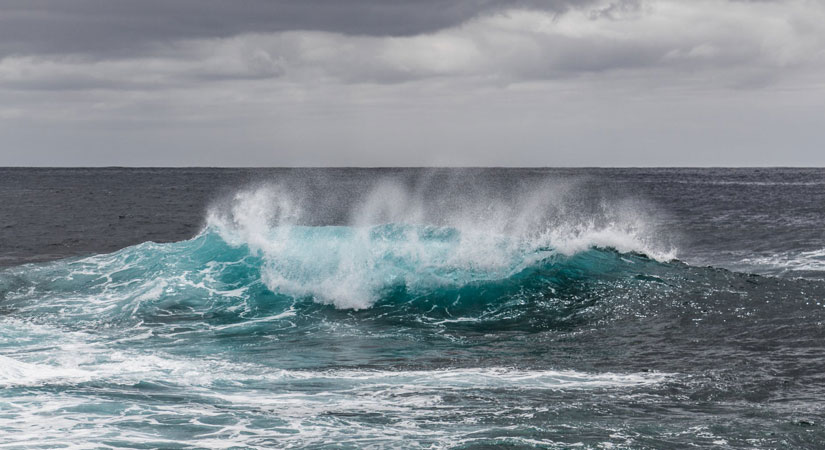NREL Researchers Pinpoint Potential That Lies Within the Waves
New Marine Energy Resource Report Summarizes Trove of Data

Marine energy's potential is as vast as the ocean itself.
And thanks to a recently published summary report of the marine energy resource for waves, tidal currents, ocean currents, ocean thermal gradients, and river currents, this potential is coming into greater focus.
Funded by the U.S. Department of Energy and written by NREL researchers Levi Kilcher, Michelle Fogarty, and Michael Lawson, Marine Energy in the United States: An Overview of Opportunities summarizes the best available data on technically recoverable U.S. marine energy resources at the national, state, and regional levels—along with the methods used to estimate them.
The study suggests that these plentiful, geographically diverse resources are well positioned to help satisfy the growing renewable energy demand, as well as meaningfully contribute to the nation's energy supply.
Diving Deep and Wide
Focusing on the technical resource within the U.S. exclusive economic zone that can be harnessed for large-scale (megawatt- to gigawatt-scale) energy generation, the report found that even if only a small portion of the technical resource potential is captured, marine energy technologies would make significant contributions to meeting our nation's energy needs.
Researchers calculated the total marine energy technical resource in the 50 states to be 2,300 terawatt-hours of generation per year (TWh/yr), equivalent to roughly 57% of the 2019 U.S. electricity generation. Add to that the additional 4,100 TWh/yr of ocean thermal resource from the U.S. Pacific and Caribbean territories, and the scale and scope of marine energy's potential comes into clear view.
For example, utilizing just one-tenth of the technically available marine energy resources in the 50 states would equate to 5.7% of our nation's current electricity generation—enough energy to power 22 million homes (according to the U.S. Energy Information Administration).
Unique Resource, Unique Opportunities
The opportunities to leverage marine energy resources are numerous and vary from state to state, region to region.
The report highlighted the potential for the following marine energy sources organized by state and/or region. Some of the key takeaways are as follows:
- Wave energy: Large quantities of wave energy can be found along the Pacific shorelines in California, Oregon, Washington, Alaska, and Hawaii.
- Tidal energy: The most predictable renewable energy resource, tidal could substantially contribute to electricity generation in Alaska, Washington state, and several Atlantic states.
- Ocean current energy: Concentrated in the Gulf Stream, ocean current energy could provide power to North Carolina, South Carolina, Georgia, and Florida.
- Ocean thermal energy: This energy source could power parts of the Atlantic coast, the Gulf Coast, Hawaii, and U.S. Pacific territories and freely associated states.
- Riverine resource: Rivers throughout the country can provide reliable power that can be harnessed without the use of dams or river diversions.
Beyond their geographic diversity and scale, marine resources are also particularly attractive due to their predictability.
For these reasons and more, marine energy resources have an important role to play as the United States looks to diversify the role of renewables in its energy generation portfolio.
Learn more about NREL's marine energy research and download the full report.
Last Updated May 28, 2025
